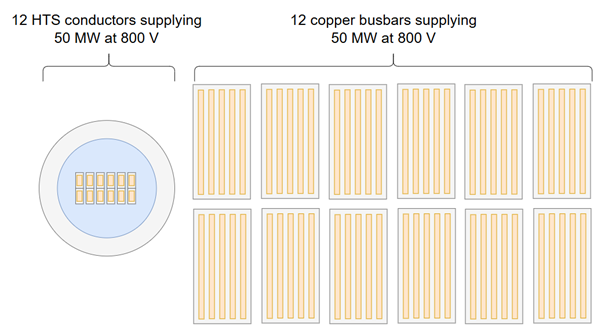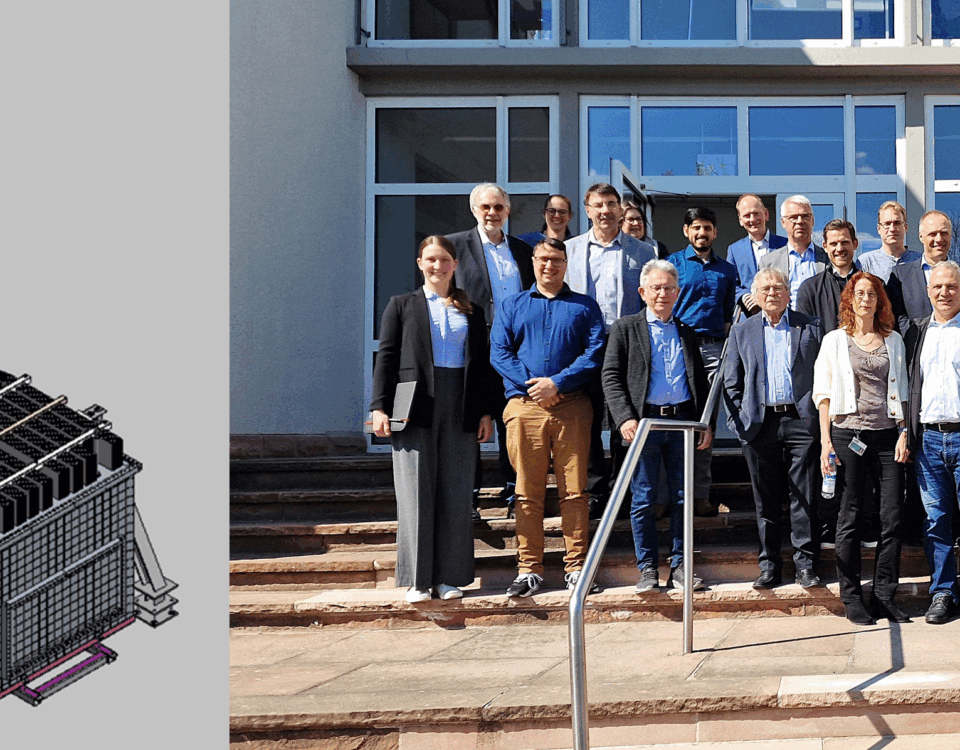Here you will find our news, press releases, publications in media as well as useful information about superconductors in the FAQ section and the links to our social media presences.
For more Information please contact: Wolfgang Reiser
News from us
Hottest infos at a glance
3. December 2025
11. May 2025
5. November 2024
7. August 2024
Answers to your most important questions
FAQ
What are superconductors?
Superconductors lose their electrical resistance abruptly below a certain temperature, known as the critical temperature. This phenomenon was discovered by physicist Heike Kamerlingh Onnes in 1911, during his research on helium liquefaction, first observing it in mercury. Other metals and metallic compounds also exhibit superconducting properties at extremely low temperatures.
The critical temperature for metallic superconductors can only be reached through complex cooling with liquid helium. Consequently, the use of this technology has been primarily limited to research and medical applications. In 1986, Alexander Müller and Georg Bednorz discovered materials that lose their electrical resistance at comparatively higher temperatures. These so-called high-temperature superconductors can be brought to operating temperature more affordably using liquid nitrogen. This discovery opened up the possibility of using superconductors in industrial applications as well.
The critical temperature for metallic superconductors can only be reached through complex cooling with liquid helium. Consequently, the use of this technology has been primarily limited to research and medical applications. In 1986, Alexander Müller and Georg Bednorz discovered materials that lose their electrical resistance at comparatively higher temperatures. These so-called high-temperature superconductors can be brought to operating temperature more affordably using liquid nitrogen. This discovery opened up the possibility of using superconductors in industrial applications as well.
What are superconductors made up of?
Modern superconductors, which lose their electrical resistance at temperatures around -200°C, are brittle ceramic materials. To produce flexible wires from these materials, special manufacturing processes had to be developed. Today, tapes with a superconducting coating are produced industrially. The layer structure of these coated conductors consists of a thin metal tape as a substrate, one or more buffer layers, the superconducting layer, and a protective layer.
What are superconductors cable of?
Superconductors have no electrical resistance in their operating state, allowing them to conduct electricity almost without losses. They can also carry significantly more current than conventional conductors of the same cross-section. These properties enable the design of highly efficient, compact, and lightweight power rails, motors, generators, and more. Thus, superconductors contribute to energy and resource efficiency.
Doesn't the cooling eliminate all the positive effects of superconductors?
Medicine and research utilize low-temperature superconductors for specific purposes, which require energy-intensive cooling. In contrast, modern high-temperature superconductors can be cooled very efficiently. The power consumption of the cooling system is significantly lower than the electrical losses avoided by using the superconductor. The energy expenditure for cooling is already accounted for in all information regarding the energy consumption of superconducting systems. However, it is often overlooked that conventional energy systems also require powerful cooling in many cases.
What seperates modern superconductors from those 10 years ago?
The first generation of high-temperature superconducting wires (1G) was produced using a powder-in-tube process, where thin silver tubes were rolled and filled with superconducting material. The use of silver made this wire very expensive, and it was also labor-intensive to ensure consistently high wire quality.
The new generation of wires (2G) is produced using continuous (chemical or physical) coating methods. These technologies ensure a consistently high current-carrying capacity of the material. The processing properties of the wire have also significantly improved. Economies of scale in industrial production are expected to further reduce the prices of modern superconducting wires in the future.
The new generation of wires (2G) is produced using continuous (chemical or physical) coating methods. These technologies ensure a consistently high current-carrying capacity of the material. The processing properties of the wire have also significantly improved. Economies of scale in industrial production are expected to further reduce the prices of modern superconducting wires in the future.
What is a superconducting busbar system?
A superconducting busbar system transmits direct currents in the range of hundreds to thousands of kiloamperes without electrical losses or heat generation due to line resistance.
The system consists of a bundle of superconductors thermally encapsulated in a cryostat. It also includes current feeds that connect the superconductor to the normal-conducting grid and the cooling supply. In the superconductor itself, no heat can be generated during current transmission due to the lack of electrical resistance. The cryostat minimizes cooling losses through vacuum insulation and superinsulation. The majority of the cooling effort is caused by the transition from the warm conventional conductor to the superconductor operating at -200°C. Liquid nitrogen serves as the refrigerant.
The system consists of a bundle of superconductors thermally encapsulated in a cryostat. It also includes current feeds that connect the superconductor to the normal-conducting grid and the cooling supply. In the superconductor itself, no heat can be generated during current transmission due to the lack of electrical resistance. The cryostat minimizes cooling losses through vacuum insulation and superinsulation. The majority of the cooling effort is caused by the transition from the warm conventional conductor to the superconductor operating at -200°C. Liquid nitrogen serves as the refrigerant.
What are the advantages of superconductive busbar systems?
A superconducting busbar system transmits direct currents in the range of hundreds to thousands of kiloamperes without electrical losses or heat generation due to line resistance.
The system consists of a bundle of superconductors thermally encapsulated in a cryostat. It also includes current feeds that connect the superconductor to the normal-conducting grid and the cooling supply. In the superconductor itself, no heat can be generated during current transmission due to the lack of electrical resistance. The cryostat minimizes cooling losses through vacuum insulation and superinsulation. The majority of the cooling effort is caused by the transition from the warm conventional conductor to the superconductor operating at -200°C. Liquid nitrogen serves as the refrigerant.
The system consists of a bundle of superconductors thermally encapsulated in a cryostat. It also includes current feeds that connect the superconductor to the normal-conducting grid and the cooling supply. In the superconductor itself, no heat can be generated during current transmission due to the lack of electrical resistance. The cryostat minimizes cooling losses through vacuum insulation and superinsulation. The majority of the cooling effort is caused by the transition from the warm conventional conductor to the superconductor operating at -200°C. Liquid nitrogen serves as the refrigerant.




